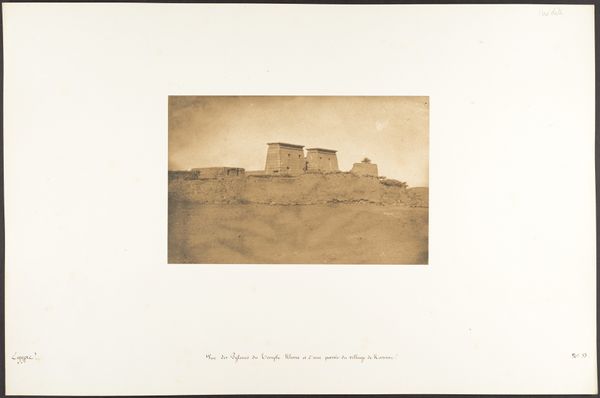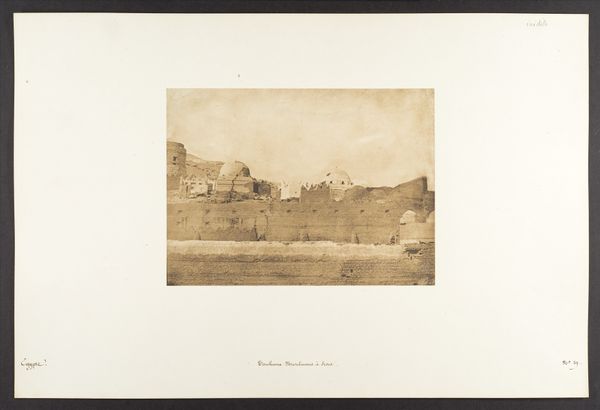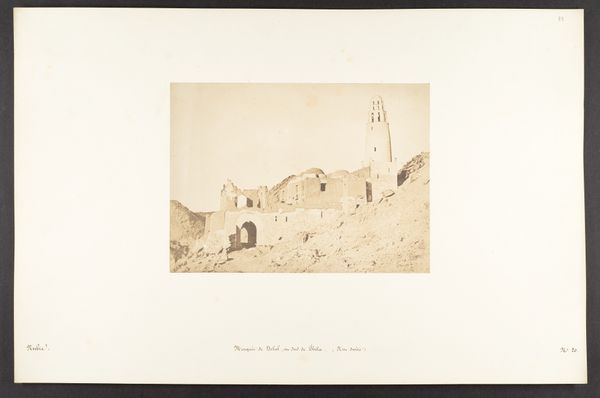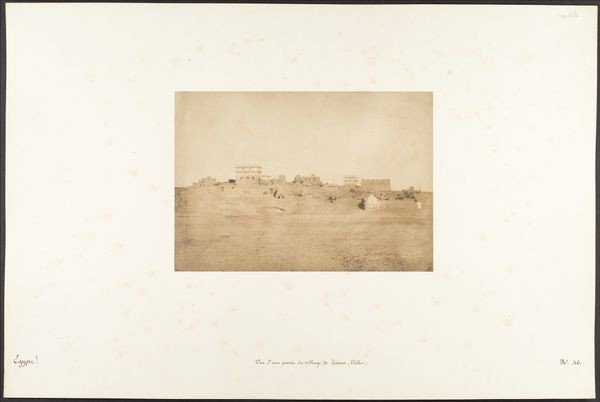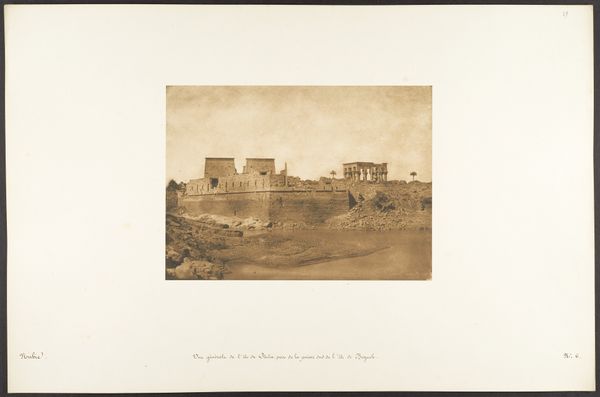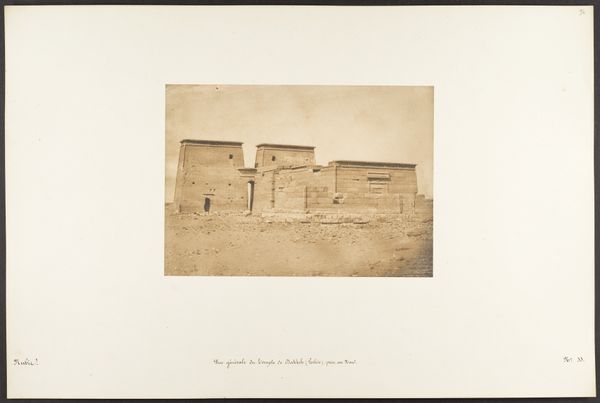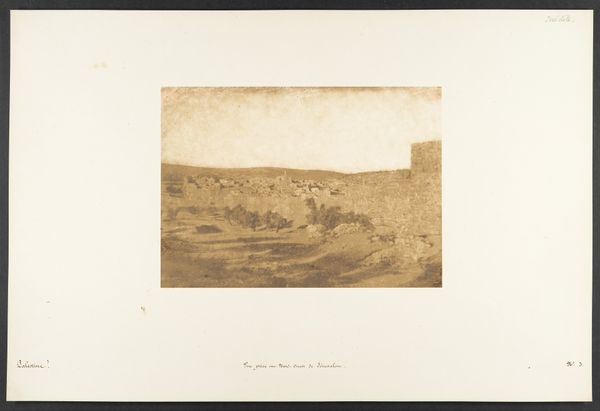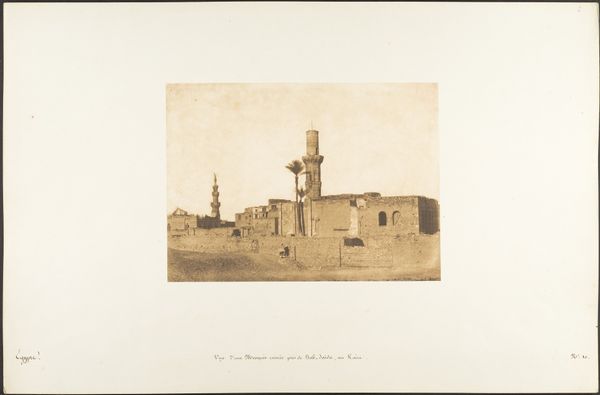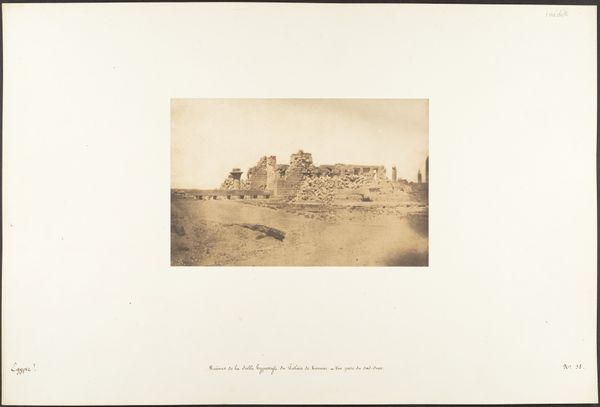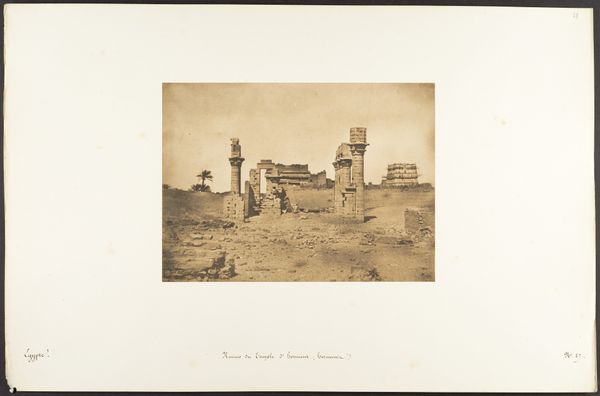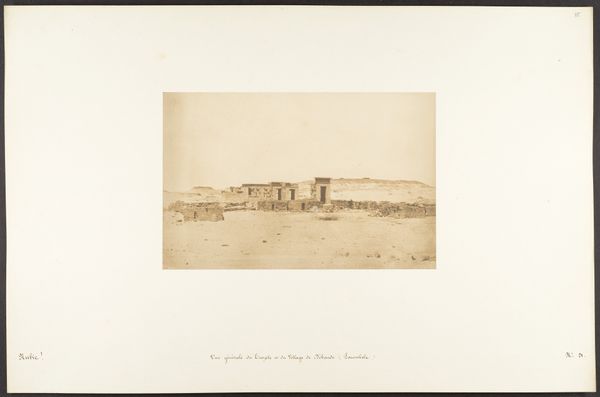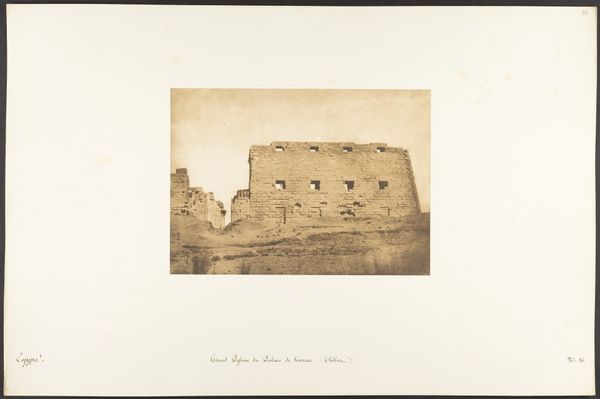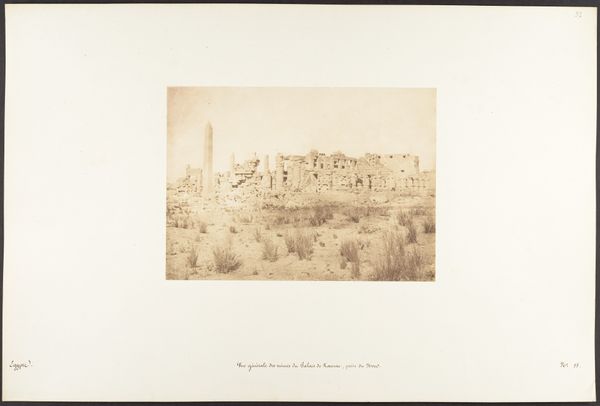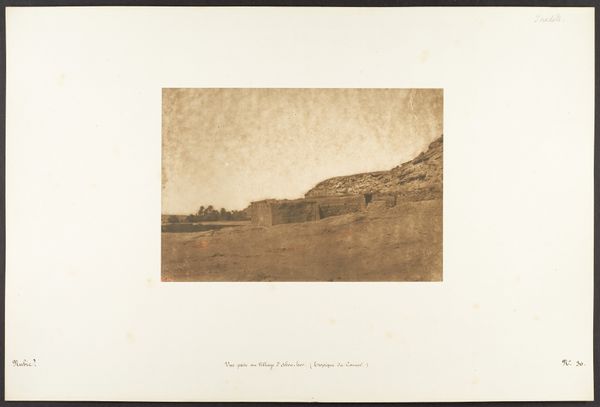
Pavillon ou Gynecée de Rhamsès-Meiamoun, à Médinet-habou 1849 - 1850
0:00
0:00
photography, site-specific, architecture
#
landscape
#
ancient-egyptian-art
#
photography
#
site-specific
#
history-painting
#
architecture
Dimensions: Image: 6 5/16 × 8 3/4 in. (16 × 22.2 cm) Mount: 12 5/16 × 18 11/16 in. (31.2 × 47.5 cm)
Copyright: Public Domain
Maxime Du Camp captured this view of the Pavillon or Gynecée of Rhamsès-Meiamoun at Medinet Habu with a paper negative around 1850. The stark architecture, standing against the shifting sands, presents a powerful image of permanence and decay. Consider the open spaces, the dark apertures within the walls, evocative of eyes peering out from the past. These void spaces, recurring throughout history, are also seen in the oculus of the Pantheon. While one speaks to divine connection, the other hints at hidden, domestic spaces. These openings remind us of the cyclical nature of life and death. Even in their ruin, these motifs of solidity and void engage us on a deep, subconscious level, tapping into our collective memory of architectural forms across millennia. The image’s emotional power lies in its ability to evoke both a sense of wonder and a melancholic awareness of time's passage.
Comments
No comments
Be the first to comment and join the conversation on the ultimate creative platform.
